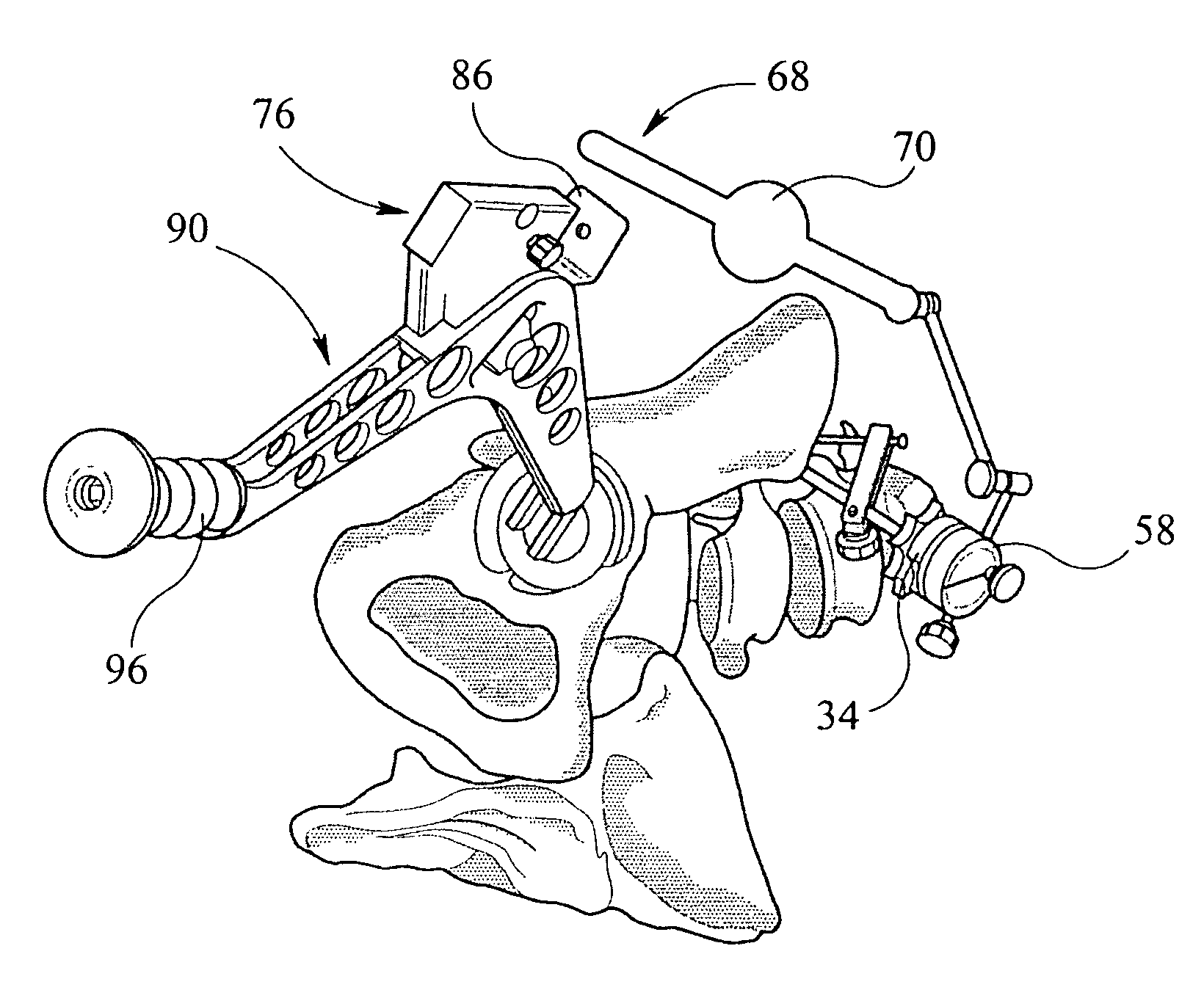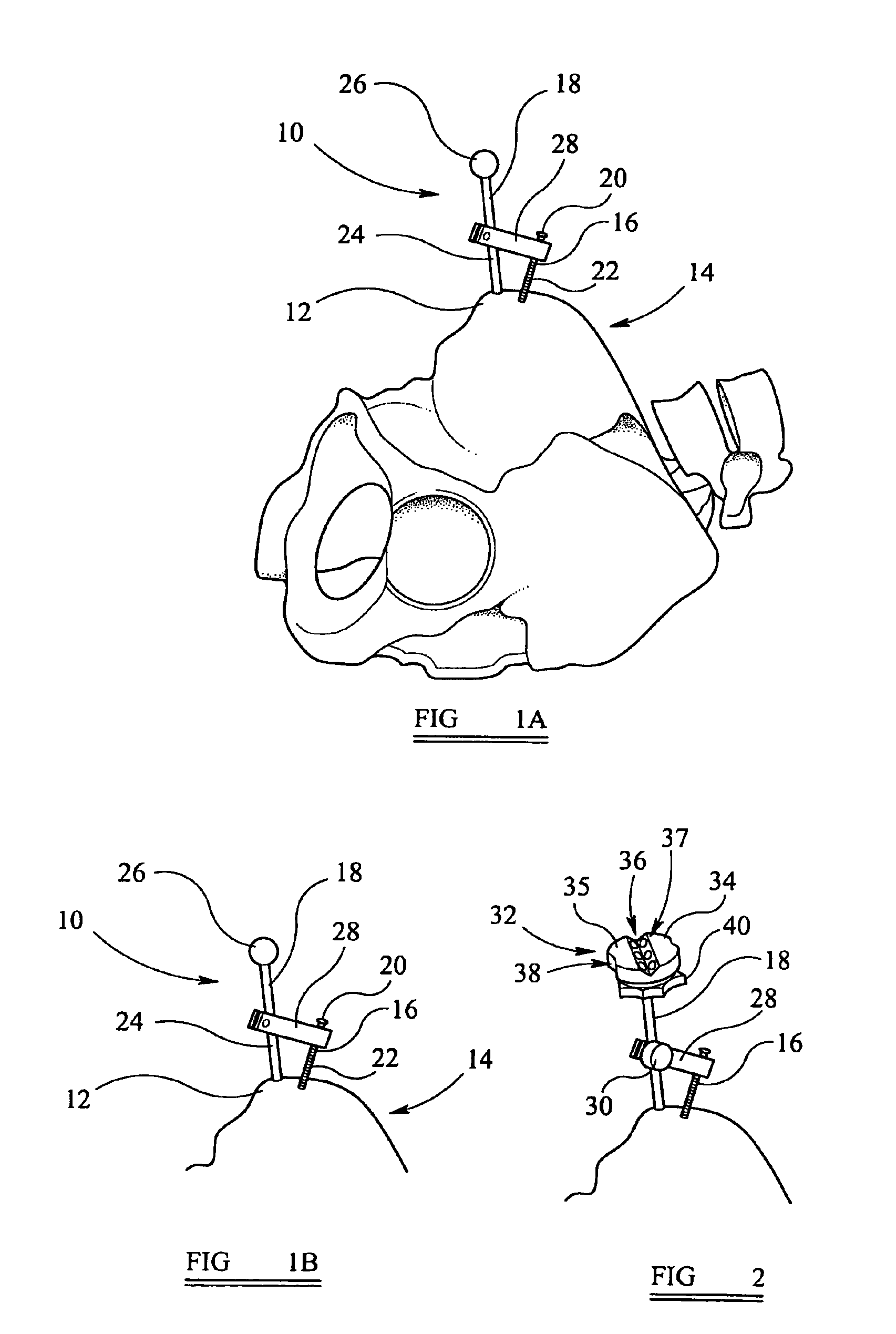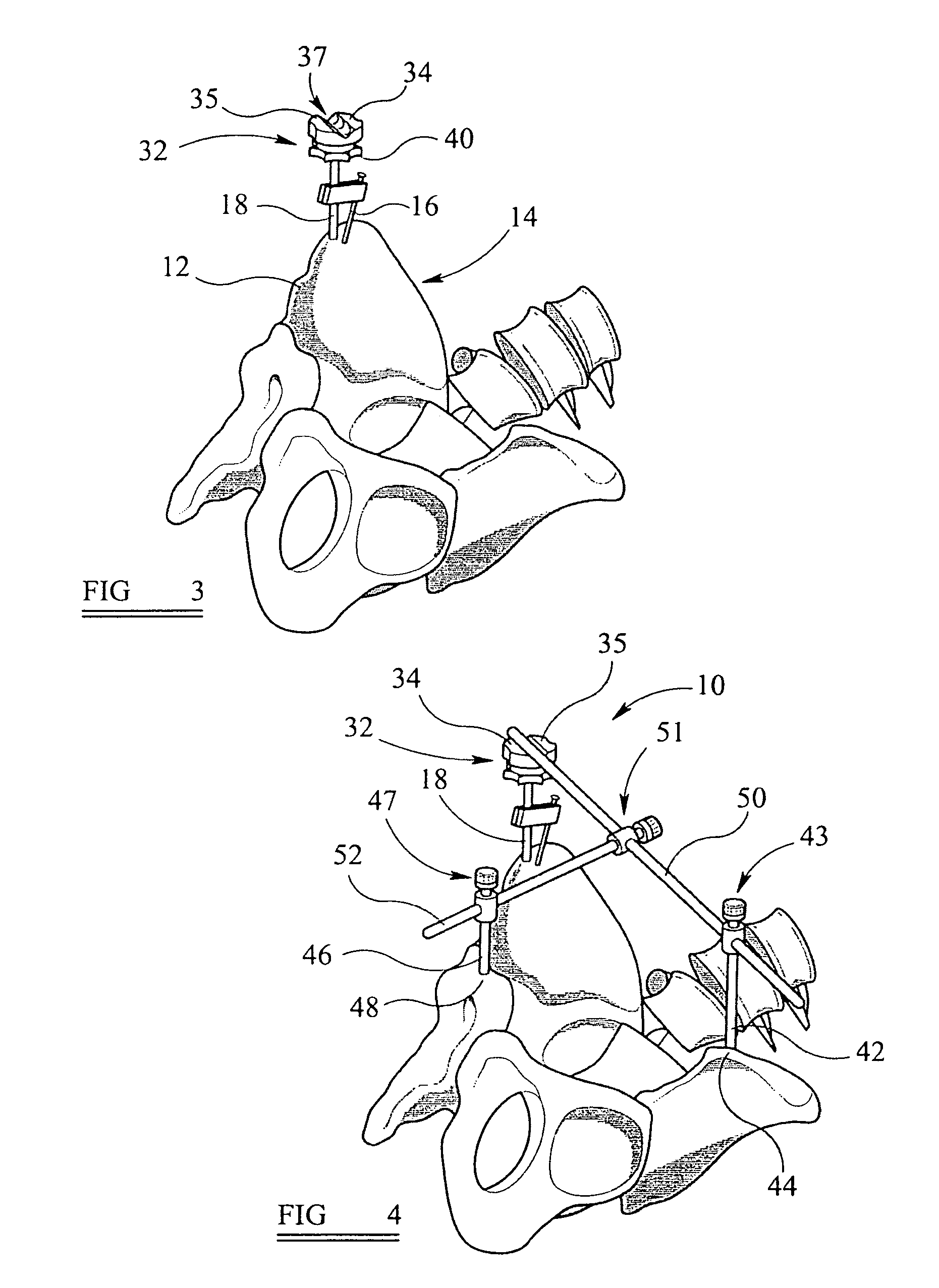Alignment device
a technology of aligning device and tibial component, which is applied in the field of aligning device, can solve the problems of increasing the risk of hip dislocation, increasing the risk of tibial component deterioration, and increasing the wear of bearings, so as to enhance the desired performance factor of the patient, quick and accurate aligning implants and tools, and minimising manufacturing costs
- Summary
- Abstract
- Description
- Claims
- Application Information
AI Technical Summary
Benefits of technology
Problems solved by technology
Method used
Image
Examples
Embodiment Construction
[0049]With reference to FIGS. 1A to 14, there is illustrated an alignment device according to the present invention. The various parts of the alignment device will be described in the order in which they are likely to be used during an alignment procedure. In the example illustrated, the alignment device is employed to align an acetabular cup during a hip replacement operation.
[0050]As shown in FIGS. 1A and 1B, a part of a datum means framework 10 of an alignment device according to the present invention, is attached to the right anterosuperior iliac spine 12 on a patient's pelvis 14. The part of the datum means framework 10 shown comprises a bone screw 16 and a first rod 18. As illustrated more clearly in FIG. 13, the first rod 18 is a single piece comprising a smooth shaft 24 with a substantially spherical ball 26 at one end thereof. The first rod 18 has axial symmetry and is provided with an axial bore, which allows a fixing screw 19 (shown in FIG. 13) to be inserted therethrough...
PUM
| Property | Measurement | Unit |
|---|---|---|
| inclination angle | aaaaa | aaaaa |
| inclination angle | aaaaa | aaaaa |
| angle | aaaaa | aaaaa |
Abstract
Description
Claims
Application Information
 Login to View More
Login to View More - R&D
- Intellectual Property
- Life Sciences
- Materials
- Tech Scout
- Unparalleled Data Quality
- Higher Quality Content
- 60% Fewer Hallucinations
Browse by: Latest US Patents, China's latest patents, Technical Efficacy Thesaurus, Application Domain, Technology Topic, Popular Technical Reports.
© 2025 PatSnap. All rights reserved.Legal|Privacy policy|Modern Slavery Act Transparency Statement|Sitemap|About US| Contact US: help@patsnap.com



